
IPv6 RIPEness - The List of 4-star LIRs
• 2 min read
Following up from the IPv6 RIPEness graphs we published earlier, those Local Internet Registries (LIRs) that fulfill all 4 IPv6 RIPEness criteria are now listed on the RIPE NCC web site.

Based in Amsterdam, NL
Articles
Likes on articles
I'm a data scientist at the RIPE NCC. I'm a chemist by training, but have been working since 1998 on Internet related things, as a sysadmin, security consultant, web developer and researcher. I am interested in technology changes (like IPv6 deployment), Internet measurement, data analysis, data visualisation, sustainability and security. I'd like to bring research and operations closer together, ie. do research that is operationally relevant. When I'm not working I like to make music (electric guitar, bass and drums), do sports (swimming, (inline) skating, bouldering, soccer), and try to be a good parent.

• 6 min read
FOSDEM is an opportunity for developers of free and open-source software from around the world to meet in “real life”, every February, for one weekend in Brussels. Among all the conversations and experiences are many topics relevant for the RIPE community.

• 7 min read
This post describes a technique to detect bursty TCP disconnections, and how it can be used on RIPE Atlas data to better detect outages in the Internet.
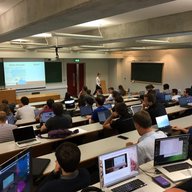
• 7 min read
Last week, the Network Traffic, Measurement and Analysis Conference (TMA) took place in Maynooth, Ireland. A full week was scheduled, featuring a PhD school across Monday and Tuesday, the Mobile Network Measurements (MNM) workshop on Tuesday, and the main conference from Wednesday to Friday. We wer…
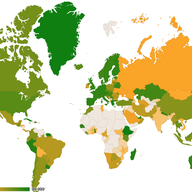
• 6 min read
In this article we present a prototype web portal, which demonstrates the deployment of RIPE Atlas probes within eyeball networks based on Internet user population estimates per Autonomous System Number (ASN) per country.
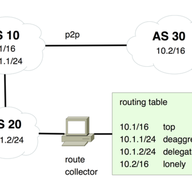
• 9 min read
BGP routing table growth is one of the major Internet scaling issues, and prefix deaggregation is thought to be a major contributor to table growth. In this work we quantify the fragmentation of the routing table by the type of IP prefix. We observe that the proportion of deaggregated prefixes has …
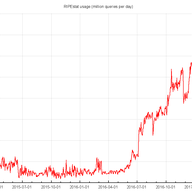
• 11 min read
Please find below the third part of our technical services update. This time we're focusing on our research activities and a number of tools we are developing.
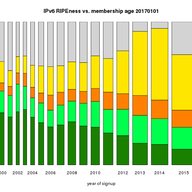
• 8 min read
This post provides an update on our IPv6 RIPEness project, including an analysis of IPv6 RIPEness for new Local Internet Registries (LIRs).

• 9 min read
Last month we covered the 2015 leap second ahead of the insertion of a leap second at the very end of 2016. As stated previously, leap seconds can trigger poorly-tested code paths; leap second handling always unearths bugs and issues. This one was no exception!

• 7 min read
In this article, we give one example of the possible communities that are now easier to build around RIPE Atlas probes. With the tagging of similar probes, existing communities can use additional tools for creating and analysing RIPE Atlas measurements, such as "IXP Country Jedi", to create their o…
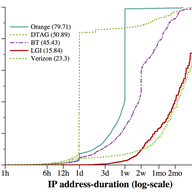
• 8 min read
We look into why dynamic addresses change and find ISPs that renumber periodically, most commonly every 24 hours or a multiple of 24 hours. We also find that outages influence address changes.
“Thank you for this, Emil and Alun! From looking at the map you provided, it would be great to see an additional anchor in Katthammarsvik. Do you think it's worth trying to add one there?”
Thanks for the suggestion. I think that depends on the physical (cables) and logical (routing) topology near Katthammarsvik in relation to the cable landing there. In a quick search I didn't find datacentres there, which makes me think it would not be too useful. Experts on the local Internet infrastructure would probably be able to answer if it would make sense or not.
This RIPE Labs article has good information on how to avoid effects from unknown attributes showing up at your BGP routers: https://labs.ripe.net/author/berislav_todorovic/bgp-path-attribute-filtering-a-powerful-tool-to-mitigate-alien-attributes/
“Hi Emile, I remember attribute 28 showing up in several previous studies. Interesting to see it causing a problem this time! As bgpdump maintainer, I'd ask you to check out v1.6.2 or higher, since 2020 there is a '-u' flag to output unknown attributes in the short (-m) mode (helpfully submitted by Italo Cunha) - it may make your future parsing life much easier :) Kind regards, Colin”
Thanks Colin, I didn't know, and this would have speeded up my analysis if I had!
Code for looking into AS Adjacency changes is available here: https://github.com/emileaben/as-neighbour-diff
Code on how to create graphs like Figure 1 ( ie. BGP view of how networks in a country interconnect ) is available here: https://github.com/InternetHealthReport/country-as-hegemony-viz
NOG Alliance is helping out network operators in Ukraine: https://nogalliance.org/our-task-forces/keep-ukraine-connected/
An effort related to keeping Urkanian servers/websites online by the Dutch Cloud Community: https://dutchcloudcommunity.nl/community/cloud4ukraine/
We got a request for the HHI scores for other countries. I've put these in a small repo on github together with the code that generated this. repo: https://github.com/emileaben/hhi-eyeballs HHI scores for 2022-03-07 are available here: https://raw.githubusercontent.com/emileaben/hhi-eyeballs/main/eyeball-hhi.2022-03-07.csv
“This is awesome work, thank you! Do you maybe have the script/notebooks/sources to reproduce this? This could be potential used for other countries.”
Hi Jenneth, The observable notebook we used for this is here: https://observablehq.com/@aguformoso/internet-outages-as-seen-by-ripe-atlas . It's a little rough around the edges, so it would be great if you could help improve it!
Thanks for your comment Maxime. I would love to see more analysis too, and the tool allows people to do this. Take for instance this thread on Twitter where Jason Livingood analyses the signals for the US: https://twitter.com/jlivingood/status/1245142990336688130 If others have analysis for specific countries they want to share it would be great to have them collected, for instance as comments to this RIPE Labs post!
Showing 18 comment(s)